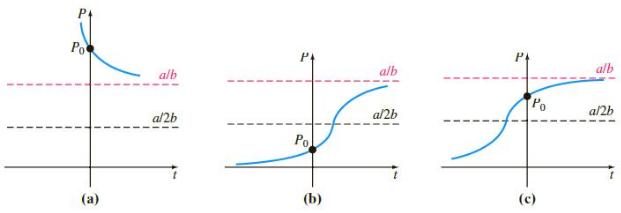With the identifications a = r, b = r/K, and a/b = K, Figures (1) and (2)
Question:
With the identifications a = r, b = r/K, and a/b = K, Figures (1) and (2) show that the logistic population model, (3) of Section 3.2, predicts that for an initial population P0, < 0 < P0, K, regardless of how small P0is, the population increases over time but does not surpass the carrying capacity K. Also, for P0> K the same model predicts that a population cannot sustain itself over time, so it decreases but yet never falls below the carrying capacity K of the ecosystem. The American ecologist Warder Clyde Allee (1885€“1955) showed that by depleting certain fisheries beyond a certain level, the fish population never recovers. How would you modify the differential equation (3) to describe a population P that has these same two characteristics of (3) but additionally has a threshold level A < 0 < A , K, below which the population cannot sustain itself and approaches extinction over time.
(1)

(2)

Step by Step Answer:

A First Course in Differential Equations with Modeling Applications
ISBN: 978-1305965720
11th edition
Authors: Dennis G. Zill





